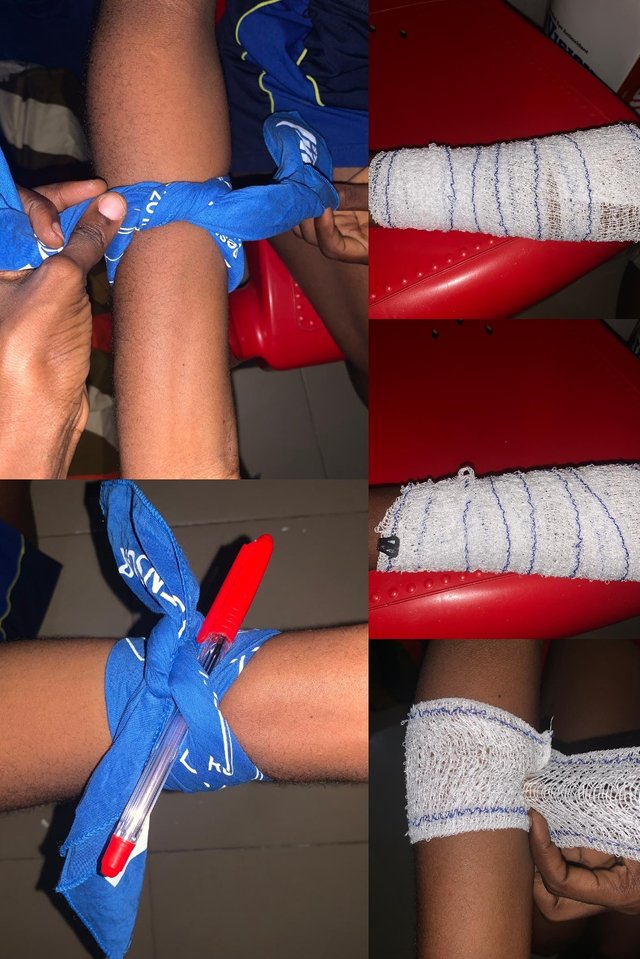
| Q1. Apply a bandage to the forearm of any peer, family member, or child. Attach a picture as proof and outline the steps you followed to apply the bandage. |
|---|
These are the steps I took in applying bandage on my sister's arm.
First step, I brought out the needed materials which include a bandage, safety pin, and an Antiseptic.
I washed and cleaned my hands to avoid introducing germ to the Wound.
The next step I took was to clean the Wound with an Antiseptic.
I patted the area around the wound with a clean Gauze pad.
Then, I applied an ointment on the Wound.
After that, I placed a Gauze pad enough to prevent further flow of blood and apply pressure gently.
I placed it so that it's covers the wound very well.
The next step is wrapping the bandage, I wrapped the Wound from below. While wrapping bandage, I ensured that it's flat and not twisted.
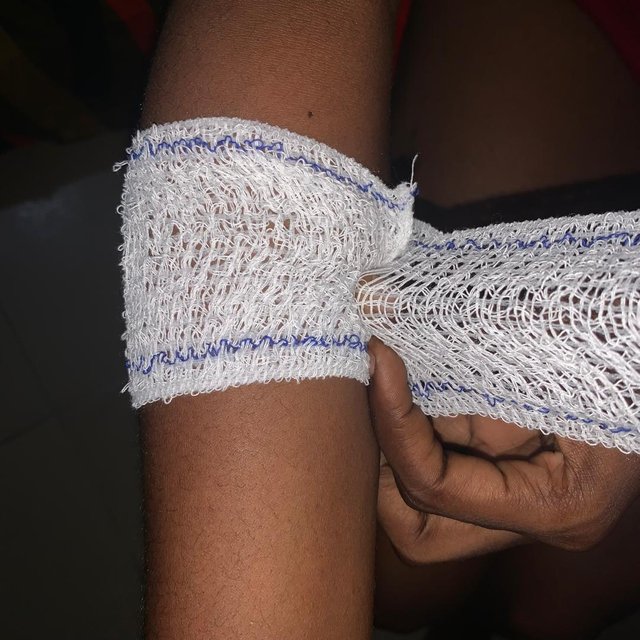
While wrapping the bandage, I also ensured that it's tight but not too tight in order not to restrict the flow of blood.
After placing the bandage, I used a safety pin to secure it in place.
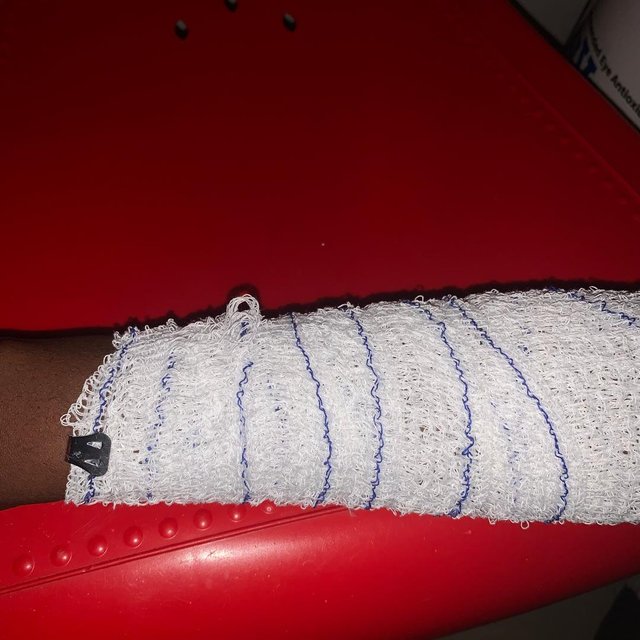
- After that, I checked my sister's hand for symptoms of blood circulation restriction like numbness, coldness and bluishness and I noticed none so I left the bandage that way.
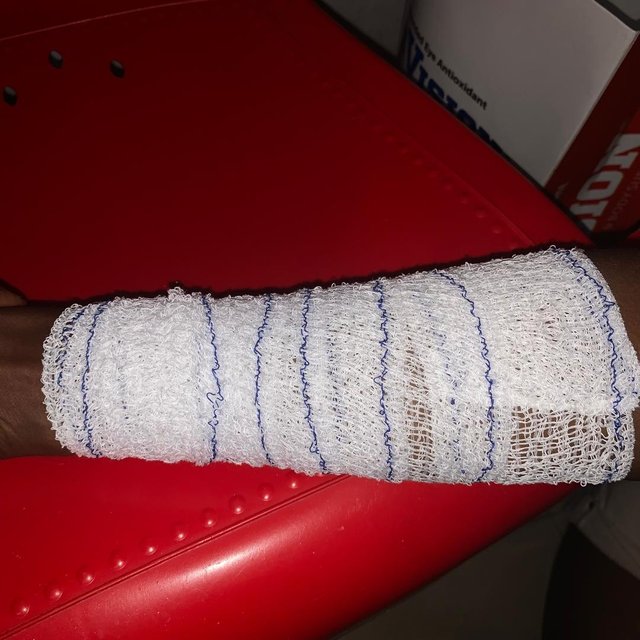
| Q2. Apply a cloth tourniquet to any peer, family member, or child. Write down the steps for applying the tourniquet. Explain how, when, and by whom a tourniquet should be removed. |
|---|
To do this, I brought a clean cloth that is Pliable and strong.
I placed the Cloth 2-3inches above the Wound, making sure that it's directly on the skin and tied it into a knot inorder for the Cloth not to loosen.
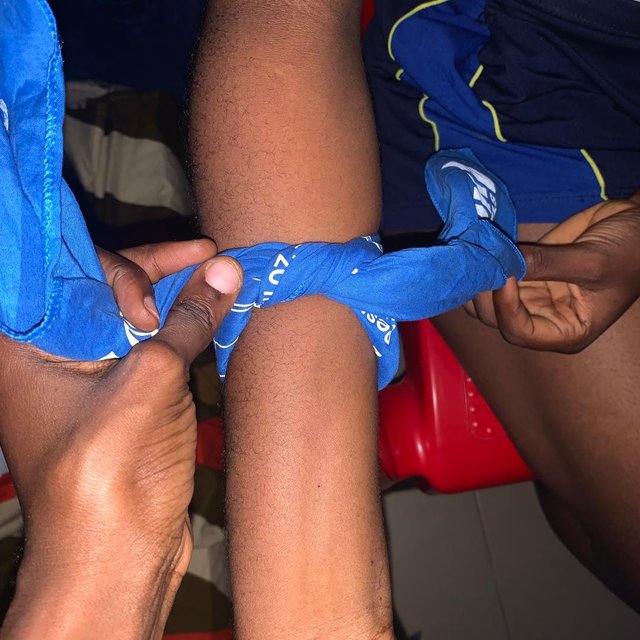
The next step I took was to place a hard object which is a pen in-between and tied another knot inorder to tighten it. I then twisted the pen to tighten the clothe till the blood stops flowing.
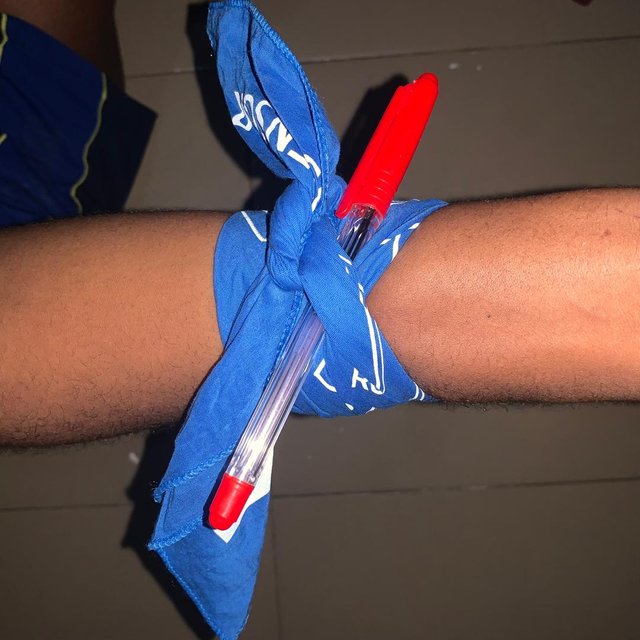
After that, I noted the time I kept it in place Inorder to track how long it's in place and also to avoid complications.
While waiting for the Medical Professional, I kept the Patient under close watch in case of any emergency.
| How a Tourniquet should be removed |
|---|
It should be in place, until a Medical professional comes to remove it.
| When a Tourniquet is needed |
|---|
It is applied when all other method of stopping a bleeding has been exhausted. It's usually the last resort until a Medical professional comes.
| Whom should remove a Tourniquet |
|---|
It should be removed by a Medical professional. Who can maintain safety, access and manage the wound to avoid Complications.
Q3. Case Study 1:
| You are treating a person who has sustained a deep cut on their forearm following a car accident. The wound is bleeding heavily, and the person is feeling faint. |
|---|
| a) What steps should you take to control the bleeding? |
|---|
As the first responder in the situation, I would apply the DRABC Protocol by ensuring that the accident scene is safe for myself and the victim.
Secondly, I will wear a hand glove, then sanitize my hands and use a bandage to cover the wound to stop the blood flow.
After that, I would raise the wounded arm above the level of the heart inorder to reduce blood flow.
Then, I will maintain the pressure until the bleeding stops or until a Medical professional comes. I will also keep an eye on the Victim while waiting for help inorder to avoid any Complications like weakness, paleness. If the Victim feels faint, I would raise his legs a little and lay him low.
| b) How would you assess whether the bleeding is arterial, venous, or capillary? |
|---|
To know this, I will check out for the color of the blood and the rate of blood flow.
If the blood is bright red in Color and squirts out with force and rhythmically with the heartbeat then it's from the Artery.
If the blood is dark red in Color and flowing out consistently then it's from the vein.
If the blood is oozing out slowly from the wound, then it's from the Capillary.
| c) What would you do if pressure alone does not stop the bleeding? |
|---|
If pressure didn't stop the bleeding, then I will apply a Tourniquet with the aid of a clean flexible and strong cloth. I would apply it 2-3 inches on the wound, place a pen or any object to hold it in place and then monitor the Victim until a Medical professional comes.
Q4. Case Study 2:
| A person has fallen from a height and complains of pain in their abdomen. They have swelling and bruising in the abdominal area, and you suspect internal bleeding. |
|---|
| a) What should you do as a first aider to manage the situation? |
|---|
Being the first aider and observing the DRABC protocol. I would prioritize my safety and at the same time moving the Victim to safety.
Secondly, I would call for help by dialing my area's emergency number telling them about the Victim, the type of accident and the Situation at hand.
I would check for responsiveness by gently shaking the shoulder of the victim to know if his okay and if his not responding, then I will start CPR immediately.
I would also check out for sign of shock like dizziness, rapid breathing and if I notice any, I would immediately raise the Victim's legs.
I would also stay and monitor the patient until help comes.
| b) Why should you avoid applying direct pressure to the abdomen? |
|---|
Applying pressure to the abdomen will increase the rate of the internal bleeding because it would increase the pressure within the abdominal cavity.
| c) What signs of shock should you look for, and how should you respond? |
|---|
The signs of shock I would look out for includes Pale skin, dizziness, rapid breathing and confusion and if I notice any, I would lay the person down, raise their legs up slightly. I would also use a cloth or blanket to cover him and then monitor him regularly until help comes.
Q5 Create an Infographic (Visual Illustration) on Stopping Bleeding
Design a simple infographic that explains the basic steps to stop bleeding. Include how to apply pressure to the wound, when to use a bandage, and when to seek medical help. Your infographic should be easy to understand and show simple instructions for controlling
bleeding from cuts or scrapes.
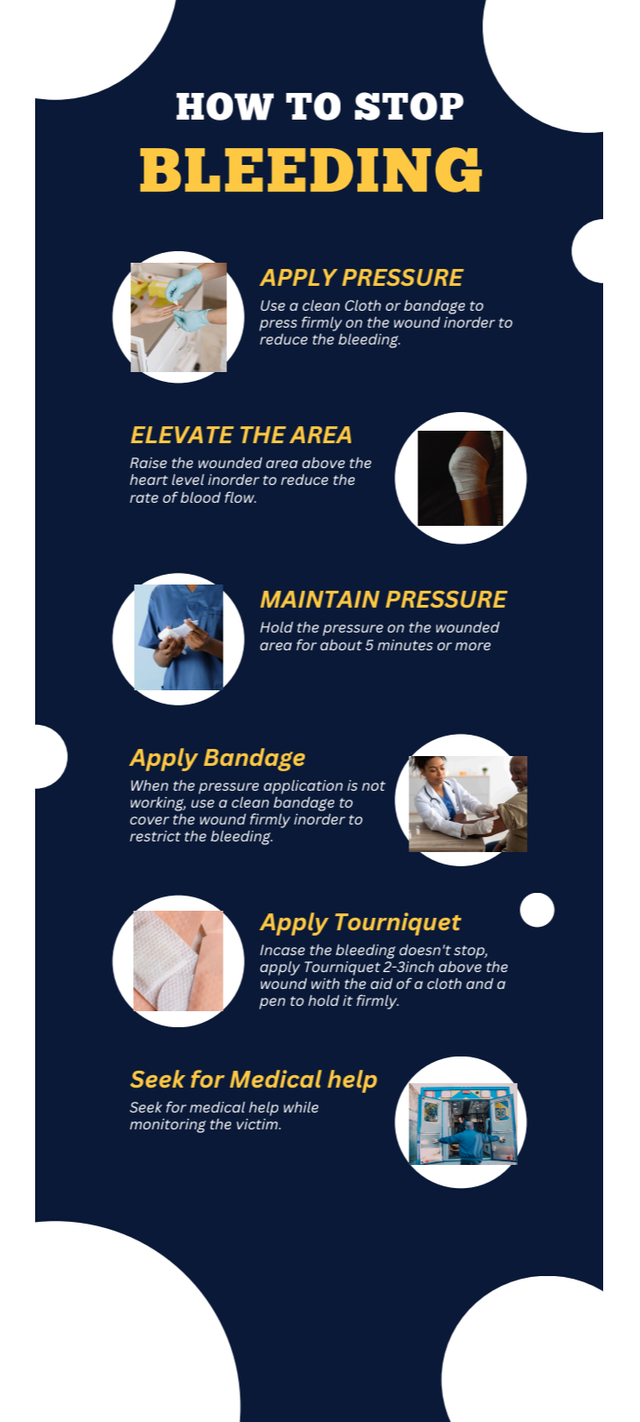
It's was quite an interesting class. Thanks for reading my post, I invite @ukpono, @blessedbee and @pea07 to participate in this contest.
Student Name: @rossnenye
Overall grade: 9.3
Plagiarism Check: Pass
AI Use: No
General Feedback: The student has shown good understanding of the course and has come up with a detailed explanation on how to manage emergency bleeding cases. Good job.
Thank you.
Regards,
@huzaifanaveed1
Downvoting a post can decrease pending rewards and make it less visible. Common reasons:
Submit
Thanks teacher
Downvoting a post can decrease pending rewards and make it less visible. Common reasons:
Submit
@tipu curate 2
;) Holisss...
--
This is a manual curation from the @tipU Curation Project.
Downvoting a post can decrease pending rewards and make it less visible. Common reasons:
Submit
Upvoted 👌 (Mana: 3/8) Get profit votes with @tipU :)
Downvoting a post can decrease pending rewards and make it less visible. Common reasons:
Submit